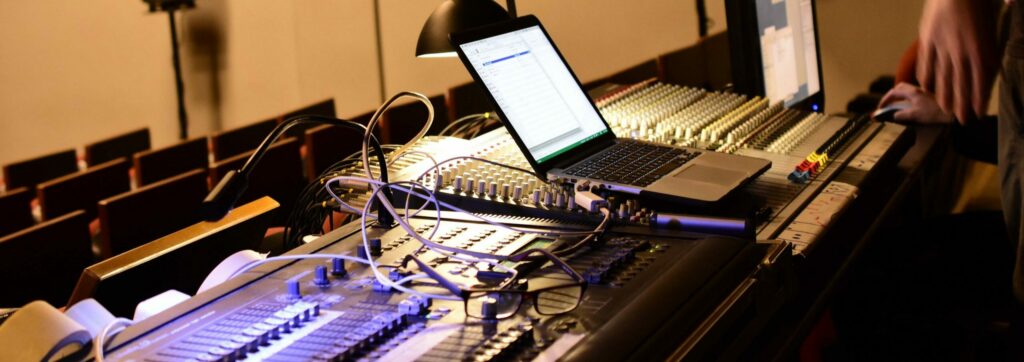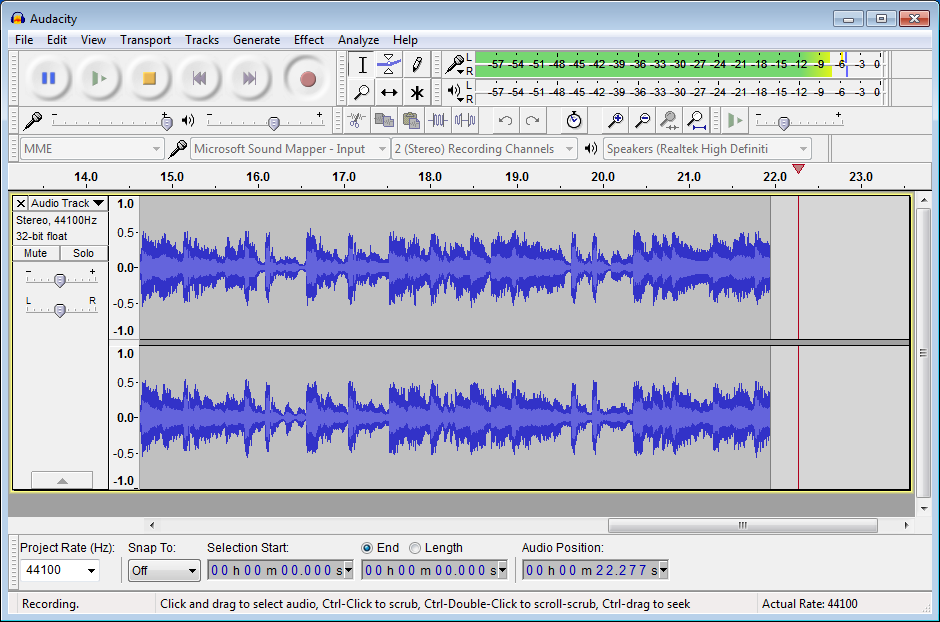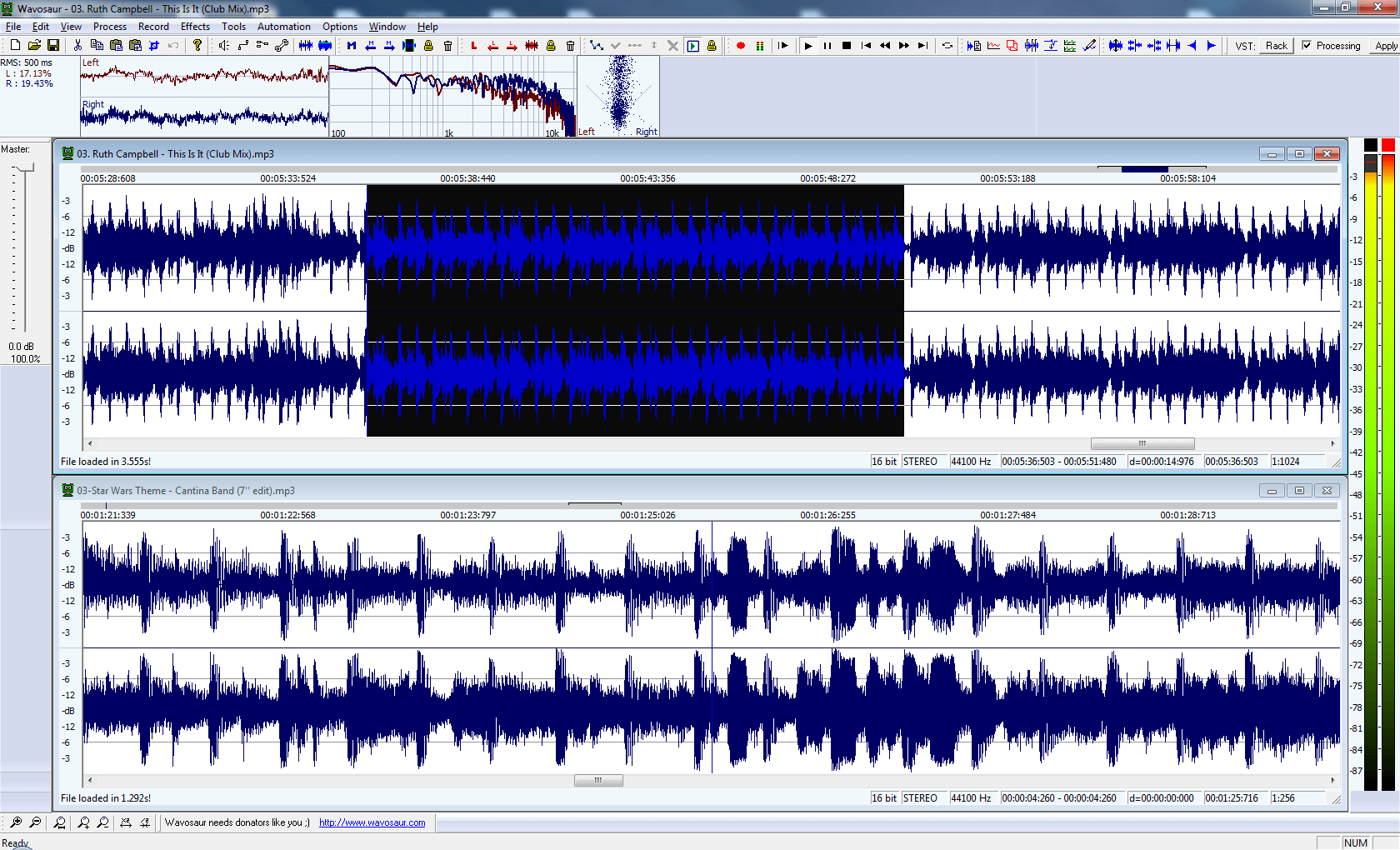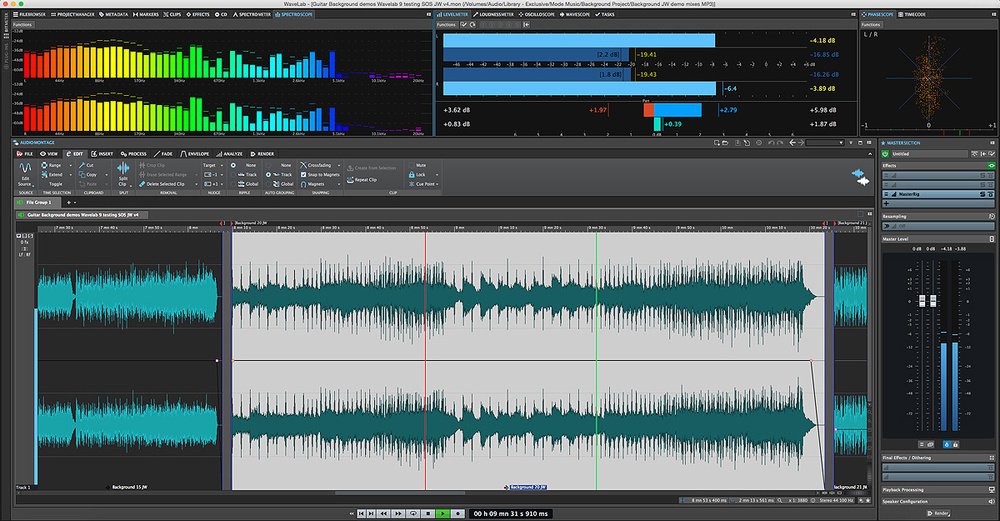In the past, we’ve discussed the best digital audio workstations (DAWs) and how to determine which DAW is best for you. While DAWs are the engineer’s and producer’s modern weapon of choice, another type of software fulfills a more specific need: audio editing.
But what are the differences between DAWs and audio editing programs? Truth be told, some overlap exists between the two, but their main purposes differ enough to distinguish them. Here, we’ll discuss what makes audio editors unique and look at some of the best audio editing software currently available.
DAWs vs. Audio Editors
There are a few ways to tell a DAW apart from an audio editor. The primary way is in the type of editing being done: destructive editing or non-destructive editing.
Destructive Editing
Typically done in an audio editor, destructive editing refers to the actual manipulation of waveforms. This includes cutting, shifting specific sections of the waveform, and more. Destructive editing results in permanent changes to the audio itself, hence its name.

Non-Destructive Editing
Non-destructive editing, on the other hand, describes the main function of DAWs. While most DAWs can also perform destructive editing, they maintain the original audio file while it is being altered. In other words, the file isn’t being destroyed and replaced entirely; it is just temporarily adjusted.
One way to think of this is to imagine a piece of paper. Destructive editing cuts the paper up to form other shapes. Non-destructive editing folds the paper (like origami) and can always be unfolded.
Other Differences
In addition to the type of editing done, audio editors and DAWs often differ in terms of tracking capabilities. DAWs can record several tracks at once (depending on available inputs). In contrast, most audio editors can only track two sources at a time. Also, DAWs offer more in the way of mix automation. While audio editors allow volume automation, DAWs let you automate panning, audio effects, EQ, and much more.

Lastly, DAWs and audio editing programs typically handle effects processing differently. Traditionally, the former does so in real-time, while the latter does not. Additionally, audio editors process these effects destructively. Again, the audio itself is changed when using effects in an audio editor. In a DAW, however, effects parameters can be shifted while the audio plays back or loops, allowing you to hear changes as they occur.
It’s worth noting that high-end audio editors can act more like DAWs when it comes to effects and non-destructive editing, especially those that offer VST plug-in support. However, simpler audio editors tend to stay in their lane.
The Best Audio Editing Software
Now that you have a decent grasp of what separates a DAW from an audio editor, you might be curious about all the audio editing programs out there. Let’s take a look at four of the best and most popular ones on the market right now.
Free Audio Editors
Not all great tools come with a hefty price tag. Some of the most accessible and versatile audio editors are completely free, making them ideal for beginners or those on a budget. While they may lack some of the advanced features found in premium software, these free programs offer plenty of functionality to get the job done. Let’s take a closer look at two standout options: Audacity and Wavosaur.
Audacity

Chances are you’ve heard of Audacity before. This free program has been around for nearly two decades now and has racked up hundreds of millions of downloads since its launch in 2000. Its simplistic interface, accessibility, and amount of features make Audacity a powerful tool for beginners and experienced users alike.
All the basic tools and functions are there: record, trim, copy, paste, zoom in and out, and more. But perhaps Audacity’s greatest appeal is its host of high-quality effects. In addition to standard compression, EQ, and fading, Audacity also boasts pitch and tempo shifting, echo, wah-wah, and more, each with parameters. Every effect here works extremely well. For a free tool, you can’t ask for much more. It’s no wonder Audacity has become synonymous with audio editing software.
Wavosaur

It might not be all that aesthetically pleasing, but Wavosaur doesn’t cost a dime, either. In fact, it resembles Audacity quite a bit. While the program lacks some of the effects Audacity has (compression, for instance), it uses free VST plugins to perform these tasks instead. All in all, Wavosaur competes with Audacity in terms of functionality, even if it looks a bit dated.
Many beginners starting a podcast use these simpler, free programs like Wavosaur and Audacity. They offer the functions necessary for recording and editing and can produce a good product without too much hassle.
Premium Audio Editing Programs
SoundForge
SoundForge by Magix brings quite a bit more to the table than the previous two free audio editors. This one costs between $400 and $600, depending on which version you get (SoundForge Pro 12 vs. Pro 12 Suite). Either way, that’s quite a step up from free. This price exists for a reason, though, as SoundForge features dozens more tools, enhanced processing abilities, multitrack recording, and visual optimization. However, if you want to trial the software, you can often purchase used audio software licenses on eBay.
If you’re serious about audio editing, you’ll appreciate features like the de-hisser, de-clicker, and de-clipper, each of which does exactly what you’d expect. The newest version also has a 64-bit architecture and VST3 plug-in support. The program even lets you automate repetitive tasks with manual scripts. With everything SoundForge can do, it’s perfect for detailed waveform editing as well as mastering.
WaveLab

Perhaps SoundForge’s main competitor, WaveLab by Steinberg pulls no punches either. The newest high-end version (9.5) costs $560, and it performs similarly to SoundForge. The program offers a 64-bit float audio engine, a spectrum editor, the RestoreRig plug-in collection (a de-clicker, de-crackler, de-buzzer, de-popper, and de-noiser), and much more.
In other words, WaveLab and SoundForge are like the McDonald’s and Burger King or Coke and Pepsi of audio editing software. Each one does similar things very well, pushing the other to do even more in the future.
Conclusion
Audio editing zooms way in and way out. It takes the waveforms themselves and turns them into something new. This makes audio editors great for precise manipulation as well as mastering. DAWs help put together a project piece by piece. Audio editors change the picture entirely.
As audio editors and DAWs become more advanced, it gets harder to separate the two. Most DAWs have audio editing capabilities built-in, making the distinction even greyer. Still, dedicated audio editors serve a crucial role for engineers and producers. Free programs like Audacity and Wavosaur can open the door for newcomers, while SoundForge and WaveLab allow for serious control.
About the Author

Ethan Keeley
Writer, Voice Talent, Musician, and Audio EditorEthan Keeley is a musician, voiceover talent, and writer from Rochester, New York. When he's not on tour with his band Unwill he's working on new songs and stories.
Leave a comment
Log in to comment


